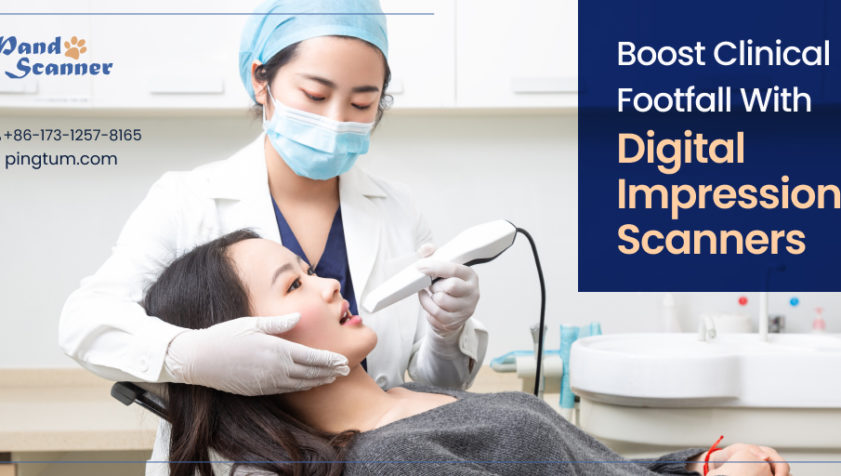Equipped with advanced features, digital impression scanners can benefit dental clinics in several ways. These scanners allow dentists to capture 3-dimensional images of a patient’s mouth, see the buccal cavity and make an accurate diagnosis. Such advantages can often elude dentists when they use a traditional impression system for it involves a tedious process to obtain dental impressions using alginates and other materials. Thanks to the convenience offered by digital impression scanners, their popularity is growing rapidly. According to statistics, the market for digital scanners can touch USD 735.01 million by 2028 at a CAGR of 9.96% (DBMR analyses.)

Some more reasons attributed to the projected growth of such scanners are:
- Increase in the number of patients suffering from loose teeth problems
- Increase in geriatric population across the world
- People have become more aware of superior patients’ experience
- Proper facility to detect malfunctions in the intraoral soft tissue
Fast and flawless capture of dental impression
Restoration solutions are all about accurate measurements and any deviation to that can result in creating improper restorations. Using a conventional scanning process if you are struggling to offer a flawless restoration solution, you can consider using digital impression scanners. With 3D intraoral scanners, you can easily offer an easier, faster, and more accurate restoration solution. As a result, your patients will also get access to planned treatments, streamlined workflow, and other benefits. Now, let us know more about the features of digital impression scanners and understand how these can be beneficial for your dental clinic and patients.
Quick and continuous scanning
While the traditional impression system takes a considerable amount of time to obtain the impression, the digital impression scanners can procure the impressions in quick time. Moreover, these are extremely convenient for dentists to capture the images of the patients’ buccal cavity without interruption and accelerate the treatment process.
Flawless results
The 3D intraoral scanners can offer feedback about the areas inside the mouth in real-time. These scanners help to improve the clinical outcome and enhance the patient experience.
Accurate restorations
Obtaining accurate custom-fit restorations can be a struggle in traditional dentistry. On the other hand, with the help of 3D intraoral scanners,precision custom-fit restorations can be easily achieved within minutes. Moreover, since 3-dimensional images of the teeth and gums can be perfectly captured, the restoration materials can be flawlessly made and fit perfectly.
Lock and protect
The digital scanners are equipped with features such as lock and protect, which enable dentists to capture an impression of the retracted gingival perfectly by locking the frame. Thus, the scanners help to capture a clear and focused image and not a distorted one.
Evaluate preparation
The undercut check feature in digital scanners helps to detect any undercuts in a selected area automatically. Hence, dentists can obtain accurate digital impressions for the restoration process.
Precise measurement
The intraoral scanners perform distance measurements after the pre and post scans are merged. This helps to verify whether the preparation meets the material need.
Select proper tip according to the requirement
The digital scanners have multiple tips, which can be selected according to the size of the patient’s buccal cavity and the ergonomics of the dentist’s hand. For instance, when treating a child, the dentist can select a smaller tip and a bigger tip for adult patients.
Conclusion
3D intraoral scanners offer dentists and patients many benefits, such as precise treatments, user-friendliness, accurate and clear images, convenience, easy rescanning option, and a streamlined restorative workflow.






